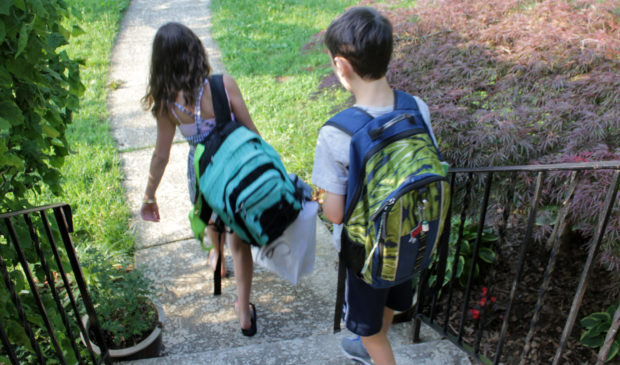Council to reconsider curfew for kids
Wednesday, May 3, 2017 by
Jack Craver Members of City Council are exploring changes to a 27-year-old ordinance aimed at keeping kids off the streets at night and during school hours.
Currently, those under age 17 who are caught wandering about unaccompanied during school days from 9 a.m. to 2:30 p.m. and any day between 11 p.m. and 6 a.m. can be cited for a Class C misdemeanor, the lowest-level criminal offense.
The ordinance was put in place in 1990 in the wake of a rising juvenile crime rate, according to an Austin Police Department report prepared for Council, which contends that the ordinance has been a stunning success.
The department points out that from 1987 to 1989, the last two-year period before the ordinance went into effect, 11 percent of Austin minors were arrested. Between 2014 and 2016, only 3 percent were arrested. Furthermore, juveniles now make up a much smaller proportion of overall arrests: 4 percent compared to 12 percent.
“I do believe it’s been very effective,” Assistant Chief Troy Gay told Council members during a Tuesday work session.
However, Council members Ellen Troxclair and Greg Casar both voiced an interest in making changes to the ordinance during a Council work session Tuesday. Although about as far apart ideologically as two members of Council get, both suggested the city should follow the lead of the state, which in 2015 approved a law decriminalizing truancy.
Troxclair, Council’s lone conservative, said that she has heard concerns from homeschooling parents whose kids may very well be out and about during the school day but not necessarily playing hooky.
Casar said that he hoped the city could come up with a policy aimed at keeping kids in school “without putting them in the criminal justice pipeline.”
In an interview with the Austin Monitor, Gay said he didn’t believe that parents who homeschool their kids should have much to worry about. Children who are out of the home during the school day, he said, should be with a parent.
Gay also drew a distinction between the state’s decriminalization of truancy and the city’s curfew. While the former’s singular aim is to keep kids in the classroom, the latter is aimed at keeping kids in school, keeping them from participating in crime or being victimized by crime, and encouraging parents to take more responsibility for their children, he said.
If cops can’t issue citations for curfew violations, he argued, they will not have much ability to stop minors they suspect of being where they shouldn’t be. To stop somebody, he noted, an officer must have a reasonable suspicion that a crime is being committed.
Without the ordinance, Gay added, “If you see a 11-year-old kid walking down the street, whether there have been burglaries or not in that area, you have to have a very specific reason to stop the individual.”
Council Member Leslie Pool also defended the existing ordinance, calling it a “tool” that police can use to “make sure students go home.”
Casar countered that the thinking on crime has changed dramatically since the ordinance was first approved. Even the Republican-dominated legislature, he noted, is beginning to rethink many of the severe criminal justice policies that swept the nation in the 1980s and 1990s.
Last year, Casar authored a “ban the box” ordinance that restricts employers from asking applicants about criminal history until making a conditional job offer. Troxclair was one of two Council members who opposed the ordinance, and has lent her support to a bill in the legislature to bar local governments from imposing such mandates on businesses. It is unclear whether that bill will ultimately pass.
Because state law requires the city to re-approve its curfew ordinance every three years, Council only has until June 18 to act if it wants to maintain the curfew. If it’s undecided on what it wants to do, Council could approve a short-term emergency extension of the current ordinance, although that would require support of eight members of Council, as opposed to the usual six.
In the last few years, APD has issued far fewer citations for curfew violations. During the 2011-13 period, it issued 1,605 citations, about 60 percent of which took place during school hours (the rest happened at night). During the next two-year period, however, it only issued 403 citations.
APD attributes the drop in citations to patrol shortages, not better-behaved kids. Indeed, the school district police force has not seen a decline in citations; it issued 1,102 during the 2014-16 period, only 20 fewer than during the previous two-year period.
Photo by woodleywonderworks made available through a Creative Commons license.
The Austin Monitor’s work is made possible by donations from the community. Though our reporting covers donors from time to time, we are careful to keep business and editorial efforts separate while maintaining transparency. A complete list of donors is available here, and our code of ethics is explained here.
You're a community leader
And we’re honored you look to us for serious, in-depth news. You know a strong community needs local and dedicated watchdog reporting. We’re here for you and that won’t change. Now will you take the powerful next step and support our nonprofit news organization?









